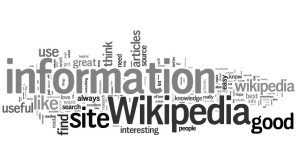 Visualizing a chunk of text into a word cloud, which sizes and styles words based on their frequency, is a versatile technique.
Visualizing a chunk of text into a word cloud, which sizes and styles words based on their frequency, is a versatile technique.
The idea likely first emerged on blogging and social networks in the mid-2000s as “tag clouds,” which visualized social media metadata mainly as a navigational aid. (You could click on the word “Technology” to see all my blog posts that I tagged as “Technology,” for example.)
But the concept soon spread to texts of all types and for many different purposes. One general trend, however, was that it moved beyond navigation to became more of a tool to make sense of a body of text and visualize which concepts were most important.
Today word clouds are used in diverse settings. Teachers use them as educational aids in the classroom. Businesses and organizations create them for various ends. They even help the general public make sense of the content of political speeches.
The following are a few of the best tools for generating word clouds. If you like something else, let us know in the comments.
Wordle – If there’s any sort of “industry standard” for word clouds, Worldle is probably it. It’s one of the most popular tools and is very easy to use, allowing you to either paste in a bunch of text or enter a URL and then customize the output. The only issue is that some users may have to jump through a few hoops to run Java, which is required. http://www.wordle.net/
Tagxedo – This option is another simple but versatile tool that gives you plenty of choices from the outset, including pulling data from a URL, Twitter username or even news or a keyword search. Styling is another plus, as you can choose from several shapes, orientations, fonts and themes before generating your word cloud. The Save and Share options after creation are also robust. http://www.tagxedo.com/
TagCrowd – A more bare-bones service, TagCrowd allows you to upload a file from which to generate your word cloud in addition to the familiar paste text and URL options. There are some choices to make, though, including a language option (in order to exclude common words) and other controls over the words that appear. http://tagcrowd.com/
VocabGrabber – A more specialized word cloud generator, VocabGrabber is designed with education in mind. It is intended for students to help students learn by picking out important words from a text and its supplemental features include definitions, a thesaurus and vocabulary lists that can be saved. https://www.visualthesaurus.com/vocabgrabber/
Do you use these or any other word cloud generators? If so, what have you created with them?











Speak Your Mind